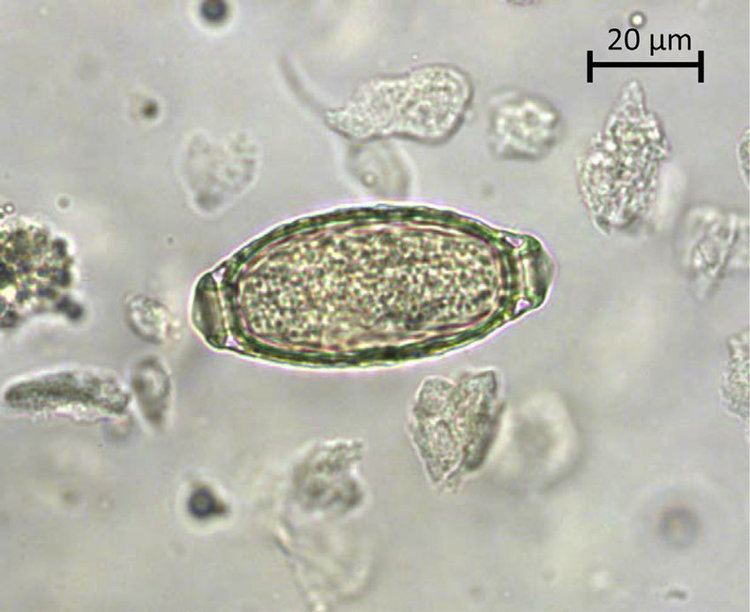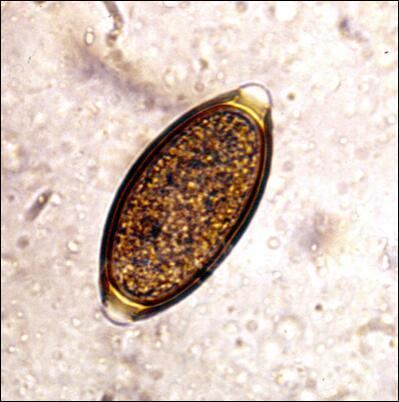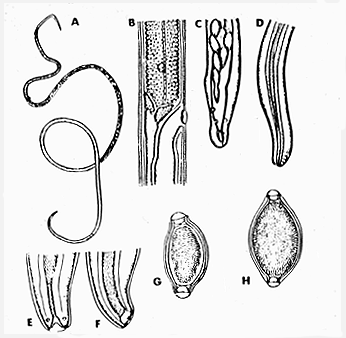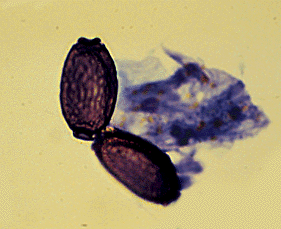Subclass Enoplia Rank Species | Order Trichurida Genus Capillaria Higher classification Capillaria | |
 | ||
Similar Capillaria, Capillaria aerophila, Dioctophyme renale, Aelurostrongylus abstrusus, Trichuris vulpis | ||
Capillaria plica (dog bladder worm) is a parasitic nematode which is most often found in the urinary bladder, and occasionally in the kidneys, of dogs and foxes. It has also been found in the domestic cat, and various wild mammals. Its presence usually produces no clinical symptoms, but in some cases, it leads to hematuria (blood in the urine), cystitis (inflammation of the urinary bladder), or difficulty in urination.
Contents
- Taxonomy and Description
- Hosts and distribution
- Life cycle
- Prevalence
- Clinical symptoms
- Diagnosis and treatment
- References

Taxonomy and Description

This species was originally described in 1819, and named Capillaria plica. In 1982, the suggestion was made that C. plica be transferred to the genus Pearsonema Freitas & Mendonça 1960, as Pearsonema plica. Currently, both names are used in the literature with roughly equal frequency. For example, searches of the PubMed database performed on 22 Nov 2008 yielded the same number of hits dated 2000 or later using either Capillaria plica or Pearsonema plica.
Hosts and distribution

Capillaria plica is often found in the urine, urinary bladder or kidneys of dogs and cats in North America, Europe, Asia and Africa. It has also been identified in the urinary bladder and kidneys of several wild mammals in North America and Europe:

Life cycle
In dogs and cats, eggs of Capillaria plica are released in the urine of the mammalian definitive host. First stage larvae (L1) develop within the eggshell in 30–36 days. When eaten by the intermediate host -- earthworms of the genera Lumbricus or Dendrobaena—the L1 larvae hatch in the earthworm's intestine. The larvae burrow through the intestinal wall and become embedded in connective tissue throughout the worm's body. If the earthworm is eaten by a suitable mammalian host, the larvae molt into second stage larvae (L2), burrow through the intestinal wall, and molt again into third stage larvae (L3). The L3 are carried through the circulatory system to the glomeruli of the kidneys. From there, they travel down the ureter to the urinary bladder. By 33 days post-infection, third (L3) and fourth-stage larvae (L4) are found in the urinary bladder. Here they mature into adults and reproduce sexually, shedding fertilized eggs into the urine of the host within about 60 days of infection. Detailed life cycle studies have not been carried out with wild animal definitive hosts.
Prevalence
Prevalence rates of up to 50% in wild hosts and 76% in kennel dogs have been reported.
Clinical symptoms
Most infected animals exhibit no clinical symptoms. In cases of heavy infestation, symptoms may include cystitis (inflammation of the urinary bladder), mild proteinuria (protein in the urine), and hematuria (blood in the urine). Mild inflammation of the ureter has also been reported.
Diagnosis and treatment
Diagnosis in cases of hematuria or cystitis is made by finding eggs in the urine sediment. Successful treatment with levamisole, ivermectin or fenbendazole has been reported.
